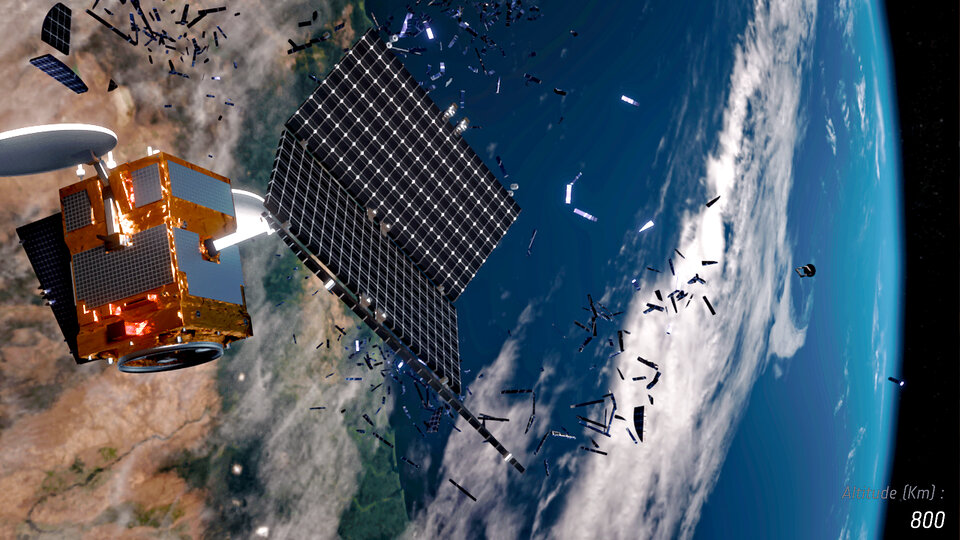ESA and the Sustainable Development Goals
ESA's Commitment to Sustainable Development: Harnessing Space for Global Benefit
The European Space Agency demonstrates its commitment to the United Nations Sustainable Development Goals through the activities promoted by its ten directorates. Satellite data and space applications, as well as space technologies, play a major role in addressing issues ranging from health care and education through to climate change and human migration. ESA’s multifaceted technical expertise can provide policy makers, aid organisations and private companies with the necessary tools to support economic growth, social development and environmental protection.
ESA has promoted and reported on sustainable development since 2008, producing the Corporate Responsibility and Sustainability Report every two years to focus on the environmental and social impact the agency has across a wide range of areas. Since the adoption of the United Nations 17 Sustainable Development Goals in September 2015, ESA has developed and maintained a comprehensive database of activities in pursuit of them. The database includes hundreds of examples of space applications, satellite programmes, technologies, data and services that are helping to make Earth a better place. The ‘toolbox’ enables users to access specific information on sustainable development and to join forces through an online platform.
The MELiSSA pilot plant at the University Autònoma of Barcelona, Spain.
All of the agency’s directorates contribute to sustainable development in some way and target multiple SDGs. ESA focuses on long-term technology development and aims to maintain the viability of Europe’s space industry through continuous innovation (SDG 9) and responsible production methods (SDG 12). Its activities in this area range from air biofiltration, car thermal protection shields, heat pipes for electronics, and camera tracking for precision automobile assembly. One such project is the Micro-Ecological Life Support System Alternative (MELiSSA), which aims to convert organic waste and carbon dioxide into oxygen, water and food by using light to promote biological photosynthesis. MELiSSA, which targets nine SDGs, may one day help humans to live self-sufficiently in space, while improving the living conditions of people on Earth through the provision of food (SDG2) and clean water (SDG6).
Exploring the cosmos for the benefit of humanity is another key component of ESA’s vision. The agency focuses on three main destinations — low-Earth orbit, the Moon and Mars — through projects that have dual benefits on Earth and in space. These include health-related experiments on the International Space Station, the development of off-grid energy systems (SDG7), and the recycling of ‘grey’ water previously used for washing or food preparation. The Concordia project, which is conducted at the French-Italian base in Antarctica and addresses several SDGs, studies how the human body copes with stress and isolation in extreme environments, offering parallels to spaceflight and the potential hazards of living on another planet.
Concordia research station in Antarctica.
Satellite telecommunications and space-based applications for use on Earth are core to ESA’s activities. Benefiting health (SDG3), education and gender equality (SDG4 and 5), agriculture (SDG2 and 15), and the environment (SDG13), these projects contribute to monitoring European air quality, developing telemedicine and tele-education systems, assessing future crop yield, managing aviation safety, and assisting with disaster relief. One prime example is the Integrated Coastal Water Monitoring for the Mediterranean Sea (ICWM for MED) project for the Mediterranean Sea, aiming to improve coastal surveillance and water-quality monitoring by integrating Earth-observation products, satellite communications and navigation solutions.
Earth observation data and services allow scientists to monitor the air, seas and land, while providing the basis for accurate weather reports and supplying relief agencies with information when disasters strike. ESA develops and operates the Sentinel satellites in partnership with the European Commission under the Copernicus programme, as well as the Earth Explorer missions, which form the science and research element of ESA’s Living Planet programme. These projects focus on agriculture and rural development, coastal monitoring, food security and forestry information, as well as Thematic Exploitation Platforms (TEPs) that serve users interested in topics such as hydrology, geohazards and urban development. In so doing, ESA addresses many SDGs including zero hunger, clean water and sanitation, climate action and sustainable cities, among others.
As of April 2017, more than 290 in-orbit satellite break-ups had been recorded since 1961.
Other projects include Clean Space to ease the environmental impact of space activities; the Galileo Global Navigation Satellite System of 24 satellites, addressing six SDGs; the Gaia satellite which will contribute to hunting near-Earth objects, safeguarding human life on our planet (three SDGs); and Space Girls Space Women to inspire future generations of women in the space industry through education (SDG4) and promoting gender equality (SDG5).
Sustainable development requires a collective commitment to social and environmental progress. By harnessing the broad expertise of its directorates, ESA is providing a concerted response to the global challenges of poverty, hunger, social inequality and climate change. The agency’s advancements in space deliver unique solutions to problems here on Earth.




